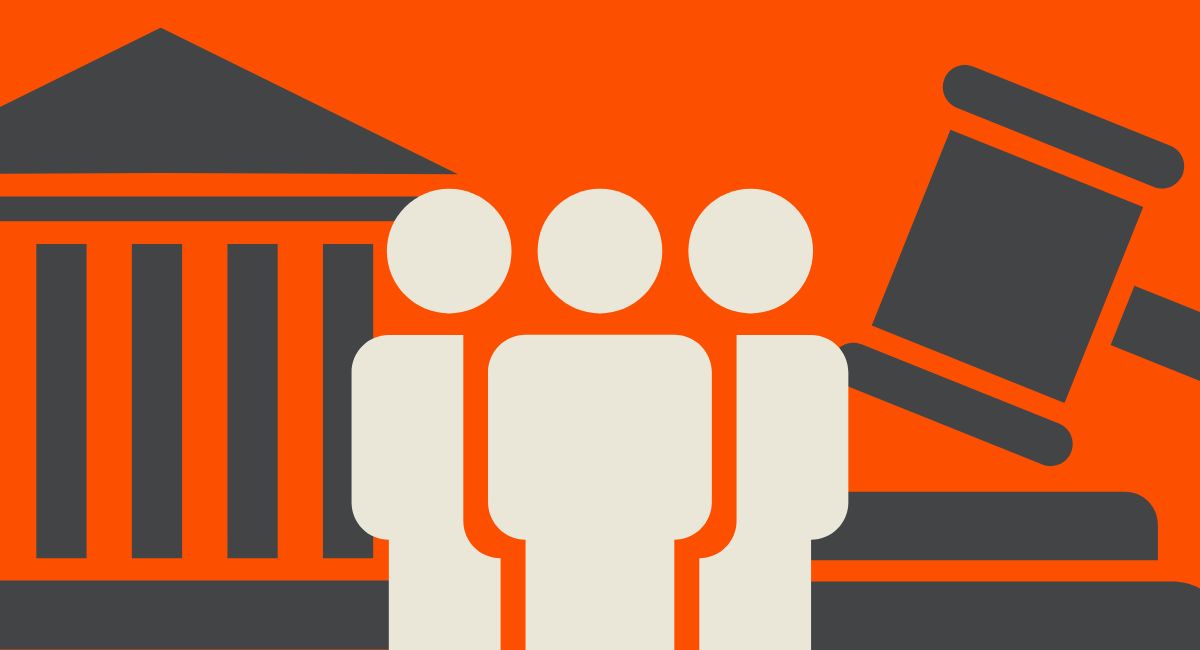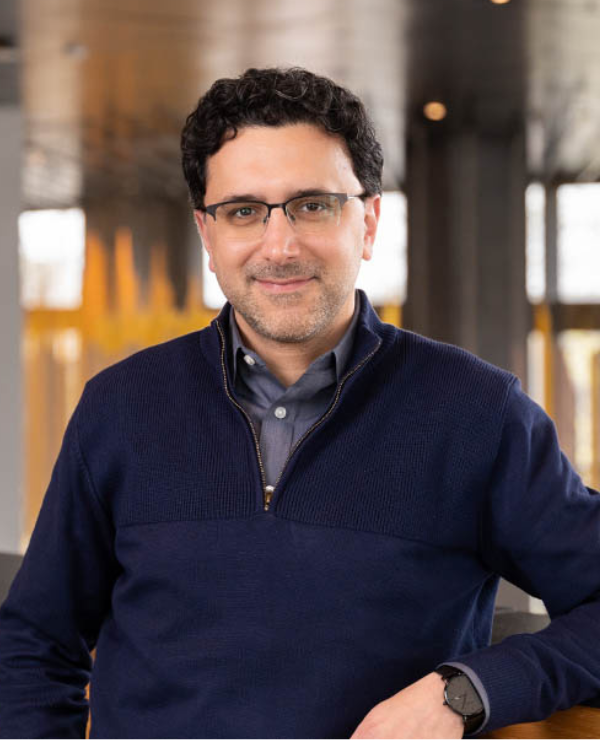
In 2022, more than 48,000 people in the U.S. died from guns. Understanding how to prevent injury and death from firearms is an important public health issue, and one that Ali Rowhani-Rahbar, professor of Epidemiology at the University of Washington School of Public Health, leads alongside his research team at the Firearm Injury & Policy Research Program at UW Medicine.
As part of National Gun Violence Awareness Month in June, Rowhani-Rahbar shared how a new grant is helping his research team study extreme risk protection orders — also known as red flag laws — and how they can be effectively used to temporarily remove guns from dangerous situations and help people in moments of crisis.
What are extreme risk protection orders — also known as red flag laws — and why are they important for preventing gun violence?

Rowhani-Rahbar: Red flag laws or extreme risk protection orders (ERPO) are an innovative legal tool to restrict access to firearms temporarily for people who show dangerous behavior and might be at imminent risk of harm to self or others. During moments of crisis — someone says they are going to hurt themselves or they are going to hurt other people — we can act to prevent a shooting from happening by temporarily removing firearms from those situations.
Twenty-one states and the District Columbia have enacted extreme risk protection orders. States have different names for them, but the goal is the same, which is reducing the lethality of dangerous behavior. It is important to emphasize that ERPO is within the civil legal system, so it’s not criminal. It's not based on punishment and is about saving lives by making sure that, temporarily, firearms are not in the hands of people exhibiting dangerous behavior.
How does the process of filing and granting an ERPO work?
ERPOs work via a petition process. A petitioner is the entity that petitions the court requesting firearm access to be restricted. Then there’s a respondent, the person who is showing the dangerous behavior.
Who can petition varies from state to state. In all states, law enforcement can petition. In many states, including Washington, family members and household members can petition. In some states clinicians or school educators can petition.
In Washington and several other states, the petitioner petitions for a person who is showing dangerous behavior to not be able to access or purchase firearms. The court considers that evidence and a judge rules to grant or not grant a temporary ERPO. The respondent is not required to be present. If it’s granted, then within 14 days, there is a full hearing. In that full hearing, the respondent and the petitioners are present and the judge decides whether they will grant a full ERPO.
The ERPO duration is typically one year; during that period, the respondent should not have access to firearms and their name gets added to the background check system so they can’t buy a gun. Once that year is done, the ERPO expires, unless the petitioner wants it to be renewed, in which case they need to provide evidence that there is still concern that the respondent is at risk of harming self or others. The court decides whether to renew.
What does research tell us about how ERPOs are being used?
In studies of ERPO, we see that some respondents have a history of dangerous behavior which tells us that ERPOs are being used in situations where they need to be used. In Washington state, our research found that a quarter of respondents had a history of domestic violence. About 47% of them had a history of substance use and 62% of them had a history of suicide attempt or ideation. These are some examples showing that ERPOs are implemented based on evidence of dangerous behavior.
You received a grant to further study Extreme Risk Protection Orders in Washington state. What will your research focus be?
We received a two-year grant from the National Collaborative on Gun Violence Research to study the intersections of behavioral health systems and criminal legal systems relating to ERPOs in Washington. Behavioral health systems are important to study because ERPOs are issued in response to someone showing dangerous behavior, sometimes rooted in behavioral health crises. When the ERPO is granted, the judge has the option of requiring behavioral health assessments. ERPOs are not only about removing firearms from dangerous situations, but they may also be an opportunity to intervene to address underlying needs. If we can identify some of the root causes of that dangerous behavior, we may be able to provide opportunities for treatment for that person in crisis and prevent future harm.
This is one of the first studies I’m aware of that will look at both behavioral health and criminal legal system encounters of ERPOs. With these funds, we can request and review court record data from superior courts in each county in Washington state. It’s a time-intensive task. There’s no hub or central repository of all ERPOs in Washington state; you must contact all 39 counties to get the records. This grant also allows us to get data from the criminal legal system and the behavioral health system and link these administrative data together to understand patterns.
What does research tell us about the public health impact of ERPOs?
There’s not a ton of research on ERPOs because not a lot of time has passed since their enactment in most states. Connecticut was the first state that enacted ERPOs (called a “risk-warrant”) in 1999, followed by Indiana’s risk-based gun seizure law in 2005. In 2014, California enacted its gun violence restraining order law (which went into effect in 2016), and soon after, a wave of other states followed.
We do have evidence from Connecticut and Indiana that ERPOs are an impactful innovative tool for suicide prevention. There’s research that shows that for every 10 to 20 ERPOs filed, one suicide could be prevented.
There is some research from several states, including Washington, that shows ERPOs are being used in situations where there is concern of mass shootings. There are several instances in which the respondent said they were going to shoot up a K-12 school and then somebody got concerned and petitioned for an ERPO. That suggests that it’s being used in situations where there was a threat of a mass shooting. Do we know if the ERPO had not been filed whether that mass shooting would have happened for certain? No, but at least we can tell that it was used in the context to prevent a mass shooting from happening because the person said they were going to do it.
How do ERPOs fit in the larger work around firearm injury and prevention?
An ERPO is one option that’s designed to temporarily create space and time between a gun and a dangerous situation. ERPOs are not a panacea or the perfect solution. They are one option in a spectrum of options. They are involuntary in the sense that someone needs to petition the court for firearms to be removed, but there are also some voluntary options for people to securely store their firearms outside the home in a moment of crisis.
What do you hope will be the policy impacts of having more research on extreme risk protection orders?
ERPO respondents may interact with the behavioral health system and criminal legal system. Understanding these overlapping pathways can help improve the long-term support available to ERPO respondents who have experienced a crisis. This knowledge could also inform judicial decisions, guide policy change, and enable more targeted interventions. This will contribute to public safety and individual well-being by informing processes to ensure the people ordered to receive behavioral health treatment to reduce the risk of dangerous behavior will actually receive those services.
ERPOs are civil court orders and are not expected to be used in scenarios where there is a crime-related reason for someone to not have a firearm. Our research will help with understanding scenarios where ERPOs are being filed and creating interactions with the criminal legal system for various reasons.
The research may also help us better understand the characteristics of those people who have had multiple encounters with the criminal legal system or behavioral health system years before they became an ERPO respondent. This may afford opportunities for prevention, so we don’t get to the point of crisis that leads to an ERPO.
There are also opportunities to make sure different actors in the ERPO processes are well trained and apply what is in the law and what is supposed to be implemented.
Other investigators in this project include: Kelsey Conrick, postdoctoral scholar in epidemiology; Julia Schleimer, doctoral student in epidemiology; Ayah Mustafa, research scientist in pediatrics; Rachel Ross, research scientist in pediatrics; and Nicole Asa, doctoral student in epidemiology.